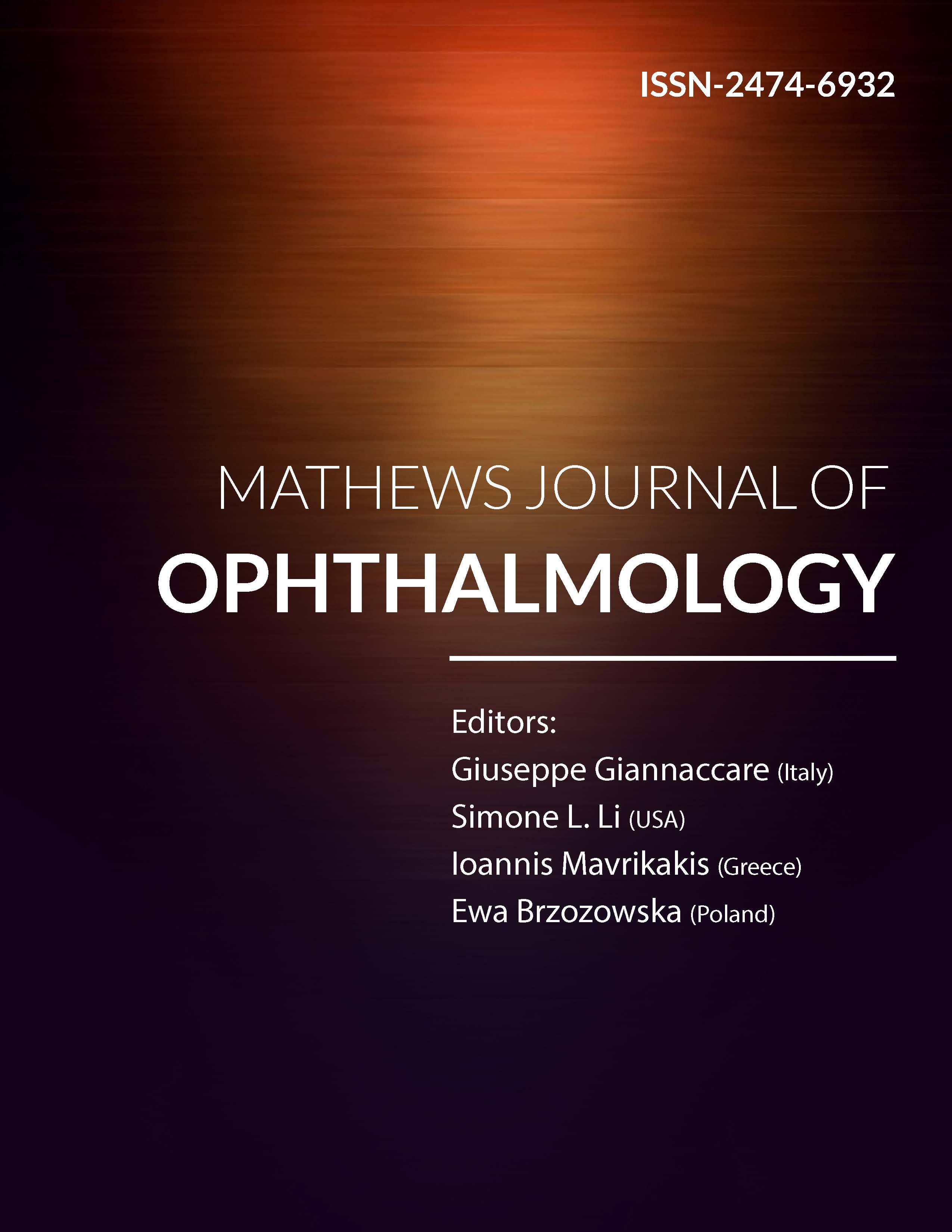
Information Links
Previous Issues Volume 2, Issue 2 - 2017
Prevalence of Anisometropia, Strabismus and Amblyopia among First Year Optometry Students in Kwame Nkrumah University of Science and Technology, Ghana
Mohammed Abdul-Kabir*,Ahmed Abdul-Sadik,Derrick Owusu Ansah,Luke Ofosu-Koranteng
Department of Optometry and Visual Science, Kwame Nkrumah University of Science and Technology, Kumasi, Ghana
Corresponding Author: Mohammed Abdul-Kabir, Department of Optometry and Visual Science, Kwame Nkrumah University of Science and Technology, Kumasi, Ghana, Tel: +233266307211; E-Mail: [email protected]
Received Date: 16 Aug 2017
Accepted Date: 03 Oct 2017
Published Date: 05 Oct 2017
Copyright © 2017 Abdul-Kabir M
Citation: Abdul-Kabir M, Abdul-Sadik A, Ansah DO and OfosuKoranteng L. (2017). Prevalence of Anisometropia, Strabismus and Amblyopia among First Year Optometry Students in Kwame Nkrumah University of Science and Technology, Ghana Mathews J Ophthalmol. 2(2): 018.
ABSTRACT
Purpose: To determine the prevalence of anisometropia, amblyopia, and strabismus among first year optometry students in Kwame Nkrumah University of Science and Technology (KNUST).
Methods: This was a descriptive cross sectional study. The study population included all first year optometry students in KNUST during the 2016/2017 academic year. Uncorrected visual acuity (UCVA) and best corrected visual acuity (BCVA) were recorded for each participant. Anisometropia was defined as spherical equivalent (SE) refraction difference of 1.00D or more between the two eyes. Amblyopia was distinguished as a reduction of BCVA to 6/9 or less in one eye or 2-line interocular optotype acuity differences in the absence of pathological causes. Cover tests were done to investigate strabismus. All data was entered into and analyzed using the Statistical Package for Social Sciences version 23, USA. Descriptive analysis and Chisquared test were employed. Statistical significance was set at p<0.05.
Results: A total of 67 students were involved in the study. The mean age of the participants was 20.96 years. The prevalence of anisometropia was 5.97% (95% confidence interval (CI), 1.49-11.94). The prevalence of anisometropia in males and females were 5.26% and 6.90% respectively (p = 0.272). 1.49% of the participants (95% CI, 1.62-6.34) were amblyopic. The prevalence of strabismus was 1.49% (95% CI, 1.62-6.34).
Conclusion: The results of this study showed that the prevalence of anisometropia, amblyopia, and strabismus among the first year optometry students was low. We advise that all newly admitted students to the university should undergo comprehensive eye examinations every academic year.
KEYWORDS
Amblyopia; Anisometropia; Strabismus; Vision Screening.